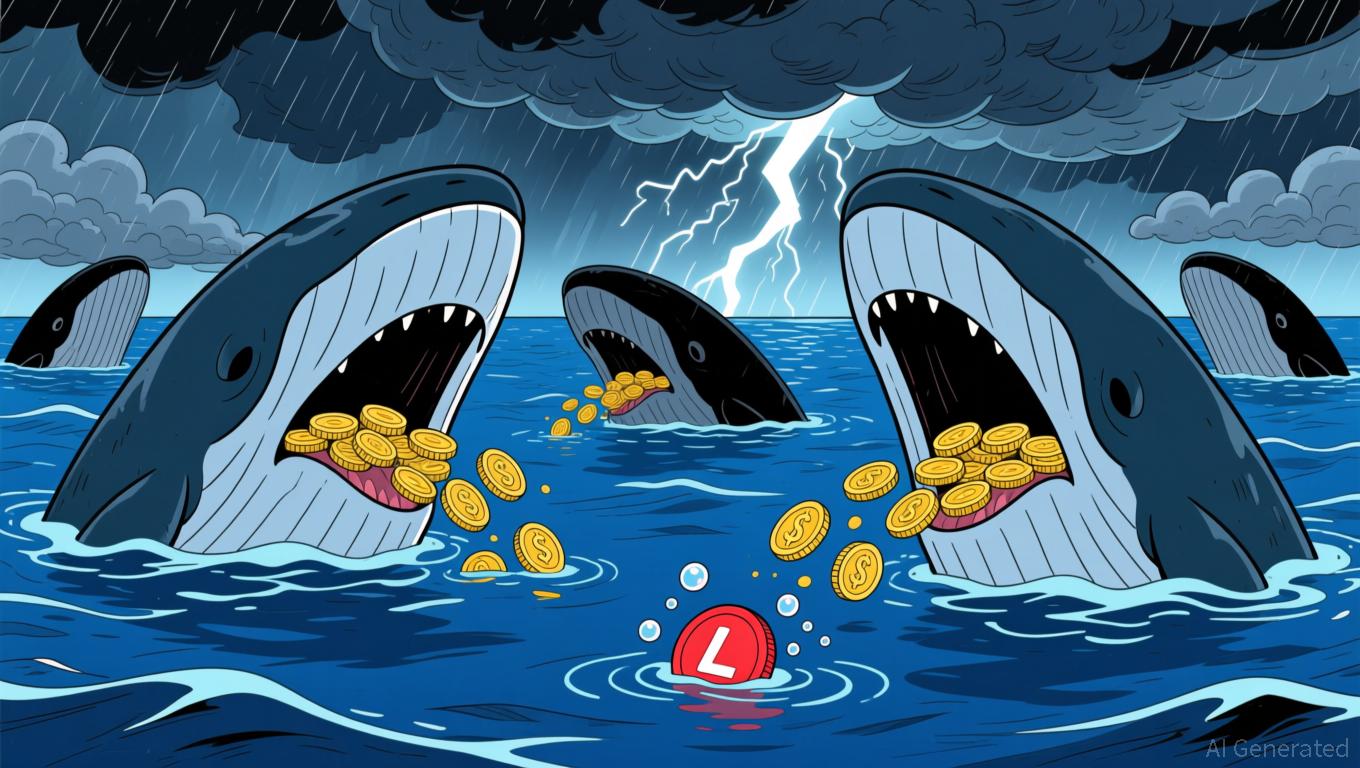The ChainOpera AI Token Crash: An Alert for Cryptocurrency Initiatives Powered by AI
- ChainOpera AI token's 96% collapse in late 2025 exposed systemic risks in AI-driven crypto projects, highlighting governance, algorithmic, and regulatory flaws. - Centralized control by ten wallets and opaque AI models triggered liquidity crises and panic selling, undermining decentralization principles. - Regulatory ambiguity from the 2025 GENIUS and CLARITY Acts exacerbated instability, deterring institutional investment and amplifying market volatility. - Market sentiment shifted rapidly, with investo
The Convergence of Governance, Algorithms, and Regulation
The downfall of COAI can be traced back to a governance structure that contradicted the core ideals of decentralization.

Market Mood: From Optimism to Panic
The 96% plunge in the COAI index was not just a technical breakdown—it was also a crisis of confidence. Social media was flooded with anxiety as investors recognized how fragile AI-powered crypto products could be. The turmoil at C3.ai, a major force in enterprise AI, only made things worse.
Those who once saw AI and crypto AI as reliable investments found themselves urgently seeking ways to reduce their risk.
Technical Analysis: Key Lessons Learned
The COAI debacle highlights three major threats facing AI-powered blockchain projects:
1. Centralized Decision-Making: ChainOpera’s dependence on a small group of wallets for governance created a critical vulnerability.
2. Lack of Algorithmic Transparency: The AI systems used to manage liquidity and pricing were neither properly tested nor open to scrutiny.
3. Regulatory Disconnect: The ambiguous language of the CLARITY Act and the strict requirements of the GENIUS Act underscore the necessity for regulatory frameworks that support both innovation and security.
The Path Forward: Prudence and Transparency
For AI-based crypto ventures to succeed, they must focus on openness, decentralization, and proactive engagement with regulators. At the same time, investors should approach these assets as speculative and high-risk.
Ultimately, the COAI collapse is more than just a warning—it’s a rallying cry. Both AI and blockchain are still developing, and moving forward will require better governance, clearer rules, and a healthy skepticism.
Disclaimer: The content of this article solely reflects the author's opinion and does not represent the platform in any capacity. This article is not intended to serve as a reference for making investment decisions.
You may also like
Whales Dump 31 Million LINK as $12.61 Support Turns Into Critical Threshold
- Chainlink (LINK) whales offloaded 31.05M tokens as price fell from $17.90 to $12.61 amid heavy selling pressure. - Price volatility in November (14.05-16.36) and 2025 net flow shifts highlight ongoing market instability. - Analysts view whale activity as strategic distribution, not panic selling, amid crypto's macroeconomic challenges. - $12.61 support level becomes critical for determining potential large-scale price movements in bearish conditions.

Ethereum Updates Today: Buterin Cautions That X's Push for Transparency Might Undermine the Core Privacy Principles of Web3
- Ethereum co-founder Vitalik Buterin warns X's geo-inference tool risks eroding privacy and enabling disinformation through location spoofing. - The tool's non-consensual country labeling lacks opt-out options, raising ethical concerns about transparency vs. user control. - Buterin advocates privacy-first frameworks for Ethereum, including Railgun and ZK proofs, to strengthen blockchain anonymity. - Web3 platforms face growing pressure to balance transparency with privacy, as COTI and others frame data pr
XRP News Today: XRP Stands Strong Amid Crypto Downturn as ETFs Attract Unprecedented Investments
- XRP surged 8% to $2.03 as Franklin Templeton's XRPZ ETF and Grayscale's GXRP ETF launched, signaling institutional confidence in the cryptocurrency. - XRP-focused ETFs attracted $422M in inflows since November, outperforming Bitcoin and Ethereum amid broader crypto market volatility. - Franklin Templeton's XRPZ offers 0.19% fee waivers up to $5B and daily liquidity, while Grayscale's GXRP provides zero fees for three months. - XRP's growth is attributed to cross-border payment utility and Ripple's $2.7B
Why is Momentum ETF (MMT) Soaring in 2025 and What Steps Should Investors Take Now
- Momentum ETF (MMT) surged in 2024 due to AI-driven stock euphoria, but 2025 saw sharp declines as market sentiment shifted toward value assets. - Tesla and Nvidia's 2025 losses highlighted risks of overreliance on high-valuation tech stocks, triggering sector rotations and defensive positioning. - Bitcoin ETF inflows and institutional capital shifts underscored growing investor preference for lower-volatility assets with clearer fundamentals. - Analysts warn MMT's momentum strategy remains vulnerable to
